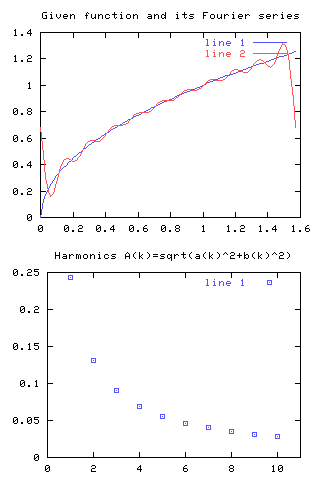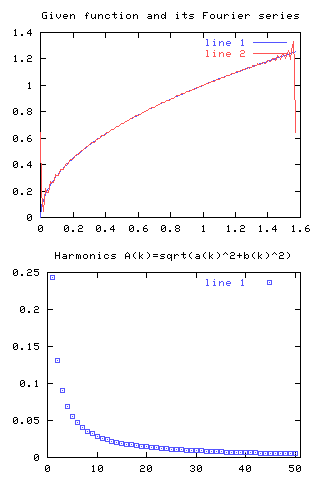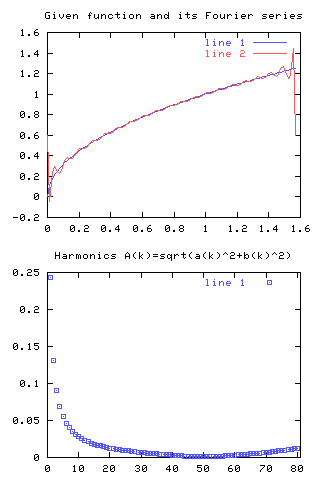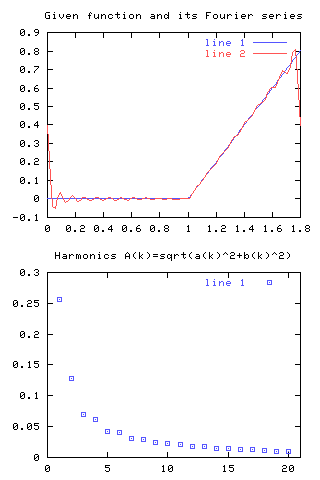
| CONSTANT | VALUE |
| e | 2.71828182845905 |
| pi | 3.14159265358979 |
|
Here is the brief description of functions. For detailed description
see the
Octave User's Guide, function index.
| ||
| FUNCTION | ARGUMENT | DESCRIPTION |
| abs(x) | complex | absolute value of x, |x| |
| acos(x) | real | inverse cosine (cos-1x) in radians |
| asin(x) | real | inverse sine (sin-1x) in radians |
| atan(x) | real | inverse tangent (tan-1x) in radians |
| besj0(x) | radians | J0 Bessel function of x |
| besj1(x) | radians | J1 Bessel function of x |
| besy0(x) | radians | Y0 Bessel function of x |
| besy1(x) | radians | Y1 Bessel function of x |
| ceil(x) | real | least whole number larger than x |
| cos(x) | radians | cosine of x |
| cosh(x) | radians | hyperbolic cosine of x |
| erf(x) | complex | error function |
| erfc(x) | complex | 1-erf(x) |
| exp(x) | real | ex, exponential function of x |
| floor(x) | real | largest whole number less than x |
| gamma(x) | complex | gamma function of real(x) |
| ibeta(p,q,x) | complex | incomplete beta function of real(p,q,x) |
| igamma(a,x) | complex | incomplete gamma function of real(a,x) |
| imag(x) | complex | imaginary part of x |
| int(x) | real | integer part of x truncated towards 0 |
| inverf(x) | complex | inverse error function of real(x) |
| invnorm(x) | complex | inverse normal distribution of the real part of x |
| lgamma | complex | natural log of the gamma function of real(x) |
| log(x) | real | logex, natural logarithm (base e) of x |
| log10(x) | real | log10x, logarithm (base 10) of x |
| norm(x) | complex | normal (Gauss) distribution of real(x) |
| rand(x) | complex | pseudo-random number generator with seed=real(x) |
| real(x) | complex | real part of x |
| sgn(x) | real | 1 if x>0, -1 if x<0, 0 if x=0 |
| sin(x) | radians | sine of x |
| sinh(x) | real | hyperbolic sine of x |
| sqrt(x) | real | square root of x |
| tan(x) | radians | tangent of x |
| tanh(x) | real | hyperbolic tangent of x |
| OPERATOR | EXAMPLE | DESCRIPTION |
| * | a*b | multiplication |
| / | a/b | division |
| + | a+b | addition |
| - | a-b | subtraction |
| ^ | a^b | power (a 'to' b) |
| ** | a**b | power (a 'to' b) |
| ! | a! | a factoriels |
The follwing input



